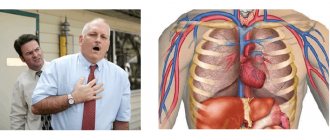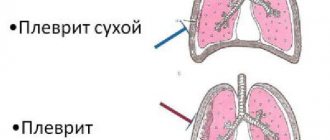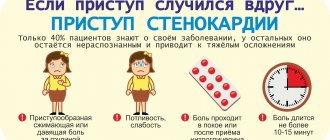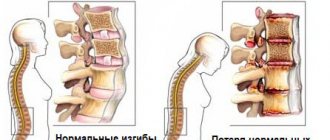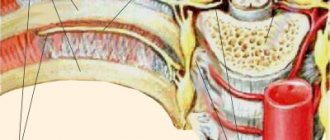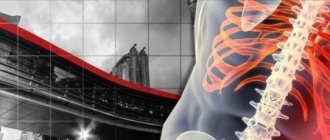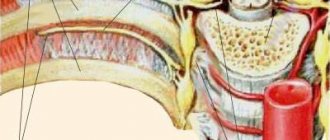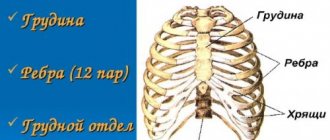Tracheitis: diagnosis, treatment.
The diseases can occur separately - laryngitis or tracheitis, but usually, due to the structural features of the organs, they occur together and give similar clinical manifestations.
The main causes of laryngotracheitis are:
- respiratory viral infections (influenza, parainfluenza and adenovirus are especially dangerous),
- bacterial lesions (streptococcal or staphylococcal, tuberculosis),
- mycoplasma lesions,
- herpes lesions,
- allergic reasons,
- chemical agents.
Provoking factors for the development of laryngotracheitis are:
- inhalation of dusty and polluted air.
- anguished cry,
- loud singing,
- smoking, alcohol,
- symptoms of general hypothermia or freezing feet.
Development mechanism
The trachea acts as an air-conducting tube, and during inflammation, swelling may occur in the area of its mucous membrane. This leads to the formation of content that is difficult to separate, irritating the receptors and disrupting the conduction of air masses.
The larynx, in addition to its air-conducting function, also plays the role of a voice-forming element. Due to the vocal cords. Air flows and vibrations of the ligaments create a certain sound heard by the ear.
With inflammation, the vocal cords become damaged and swell, and the area of the peri-ligamentous tissue begins to accumulate fluid and compress the area of the larynx.
A complication may occur - false croup (swelling with compression of the respiratory tract and suffocation).
Treatment methods
To stop an attack, the patient can take Nitroglycerin.
After diagnostic measures and establishing the exact picture of the disease, treatment with medications is prescribed. For heart pathologies, the following drugs are used:
- IBS. An attack is relieved with Nitroglycerin and Aspirin tablets and Cardiolin drops. Depending on the degree of the disease, the cardiologist may prescribe Sustak or Nitrong.
- Cerebral atherosclerosis. To neutralize pain with high blood pressure, drops of “Farmadipine” are taken, and “Glycine” is used to normalize cerebral blood flow.
- Aortic aneurysm. If you suspect this cardiac pathology, you must call an ambulance and put the patient to bed. Until the medical team arrives, the person must not be moved or given any medications, as this may result in hemorrhage. It is treated only in a hospital.
- Autonomic dysfunction. At the first signs of an attack, you should take soothing drops of motherwort or valerian tincture, or Validol tablets. Further therapy is carried out by a neurologist, who prescribes the necessary medications.
To determine the disease that is causing pain in the heart area, do not delay consulting a doctor. Self-medication can only cause harm and aggravate the pathological process that caused it. To prevent diseases, it is recommended to lead a healthy lifestyle, not worry, spend time in the fresh air, and adhere to the principles of a healthy diet.
Classification
There are acute and chronic laryngotracheitis. Acute laryngotracheitis is divided into
- primary, which is detected for the first time,
- recurrent, occurring repeatedly, due to the occurrence of colds or the influence of unfavorable factors.
Primary acute laryngotracheitis can have three course options:
- sudden laryngotracheitis without signs of acute respiratory infections,
- acutely occurring, against the background of an existing acute respiratory infection,
- gradually arising as a complication of colds.
The course of acute laryngotracheitis can be continuous or wavy.
Chronic laryngotracheitis occurs when acute treatment is improper or in the absence of treatment. Often occurs due to professional overstrain of the ligaments.
There are three forms of the disease:
- catarrhal, in which there is redness and some swelling in the area of the vocal cords and trachea
- atrophic, gradual atrophy occurs in the area of the mucous membrane, due to which it loses its protective properties and becomes inflamed. Often occurs in smokers and coal mine workers, people working in dusty areas
- hyperplastic, the growth of areas or the entire mucosal zone in the trachea and larynx is manifested, as a result breathing and voice suffer
Manifestations of acute laryngotracheitis
Acute laryngotracheitis manifests itself against the background of ARVI, beginning acutely or gradually. There are:
- a sharp rise in temperature,
- sore throat,
- soreness behind the sternum,
- rough, dry cough with pain,
- the cough has a croaking or barking character due to severe swelling and spasm of the vocal cords,
- when coughing, the pain in the chest intensifies,
- coughing attacks occur when laughing, deep breathing, inhaling dusty or cold air,
- a small amount of thick and viscous sputum is released,
- hoarseness or hoarseness in the voice,
- discomfort in the larynx with dryness, chewing.
As the process develops, the cough becomes moist, less painful, with a large amount of mucopurulent sputum.
The cervical lymph nodes may react - they become painful and enlarged. When listening to the lungs, hard breathing and dry rales are noted in the projection of the trachea.
Causes of chest pain
Angina pectoris
A painful attack of angina pectoris begins suddenly during fast walking, climbing stairs or other physical activity.
Severe pressing pain in the middle of the sternum makes a person stop and clutch his heart. Often, unpleasant symptoms radiate to the left arm or the collarbone area. Painful sensations compress the chest and prevent you from taking a deep breath. The skin turns pale and severe weakness appears. The pain disappears 5-20 minutes after resting or taking nitroglycerin tablets. The frequency of paroxysms ranges from a couple of times a month to several times a day, all of them are similar in duration and nature of the pain syndrome. Acute piercing pain behind the sternum, which is accompanied by cold sweat and lightheadedness, are more typical of myocardial infarction. In such a situation, it is necessary to call an ambulance.
Inflammatory heart diseases
Damage to the heart muscle is manifested by moderate pain, which is localized behind the sternum in the middle. The sensations are stabbing or squeezing in nature and occur at any time of the day, regardless of the level of physical activity. With endocarditis, the sternum hurts quite often. Soreness is combined with shortness of breath and palpitations. Increased pain occurs with exacerbation of the inflammatory process, as evidenced by fever and chills.
Dull pain in the center of the sternum and along the left surface of the chest is typical for myocarditis. Patients also complain of increased fatigue, a feeling of lack of air, and dizziness. Pericarditis causes severe pain and a feeling of fullness in the chest, leading to difficulty breathing. Due to ineffective heart function, symptoms worsen with minimal physical activity.
Respiratory diseases
When the sternum hurts in the center, this may indicate damage to the airways from the trachea to the middle bronchi. Viral and bacterial causes cause inflammation of the epithelial membranes, which is combined with irritation of nerve endings and a feeling of discomfort. With tracheitis and laryngotracheitis, chest pain is mild or moderate, scratching and sore throat are more disturbing.
Bronchitis is characterized by pain in the middle of the chest, which occurs at the height of the disease. There is a dull pressing pain, which intensifies during coughing attacks and significantly weakens at rest. The onset of unpleasant sensations is provoked by inhalation of cold air and dust entering the respiratory tract. The pain persists throughout the entire period of bronchitis - for 1-2 weeks.
There are also allergic causes of chest pain. Most often, the pain is caused by an attack of bronchial asthma, when, against the background of bronchospasm and suffocation, discomfort and a feeling of compression are felt in the middle of the chest. Pain of moderate intensity in the chest persists for several hours after the paroxysm. Similar clinical manifestations also occur in chronic obstructive pulmonary diseases.
Gastroesophageal reflux
With GERD, the sternum begins to hurt 15-20 minutes after finishing a meal, which is caused by the reflux of hydrochloric acid into the esophagus. The pain intensifies when bending the body forward, wearing tight belts, which contribute to compression of the stomach and reflex opening of the lower esophageal sphincter. The discomfort is localized exactly in the center of the chest; in addition to the pain syndrome, there is an intense retrosternal burning sensation and heartburn in the throat.
Painful sensations are provoked by errors in the diet - abuse of carbonated drinks, fried foods, strong meat broths. For GERD, morning pain in the chest immediately after waking up is typical, since in a horizontal position the acid passively flows into the esophagus. If symptoms are accompanied by repeated vomiting of bile or blood, emergency medical attention is needed.
Pathology of the esophagus
Constant intense pain in the center of the sternum is usually associated with esophageal causes. In acute and chronic esophagitis, moderate cutting or burning pain is observed in the middle part of the chest, which intensifies after eating. For esophageal dyskinesia and esophagospasm, paroxysmal unbearable pain in the sternum exactly in the middle is typical, which usually lasts from 10 to 20 minutes.
A sharp, dagger-like pain at one point occurs in the event of a serious disease - rupture of the esophagus. Against the background of an excruciating painful attack, vomiting of stomach contents and blood occurs, which does not bring relief. Subsequently, the pain is localized not only behind the sternum, but throughout the chest, in the epigastrium. The patient is in a state of shock, cold sweat appears on the forehead, and blood pressure drops sharply.
Neoplasms of the mediastinum
The mediastinum contains several organs: lymph nodes, thymus, thoracic duct, venous and arterial vessels. Most often, the sternum hurts when the lymph nodes are enlarged, which is caused by tumor causes - lymphogranulomatosis and non-Hodgkin's lymphomas. Moderate dull pain and a feeling of tightness in the chest are of concern; in the future, the symptoms intensify due to compression of the respiratory organs.
Thymoma initially manifests itself as discomfort in the chest area and periodic reflex cough. As the mass increases, the pain becomes stronger and radiates to the neck and shoulder blades. Patients also complain of sore throat and hoarseness caused by compression of the recurrent nerve. Similar symptoms occur with tuberculosis of the intrathoracic lymph nodes.
Complications of pharmacotherapy
Chest pain is a common side effect of taking sodium bicarbonate and other absorbable antacids. Although these drugs are used to reduce acidity, after 10-20 minutes of using them, the stomach expands and a new portion of acid is thrown into the esophagus (“rebound effect”). Other causes also lead to chest pain: long-term use of NSAIDs and corticosteroids.
Rare causes
- Granulomatous diseases
: sarcoidosis, silicosis. - Osteogenic processes
: costochondritis, osteosarcoma of the sternum, age-related changes in bone tissue. - Heart defects
: mitral disease, stenosis or insufficiency of the aortic valve. - Hiatal hernia
. - Gastrointestinal pathology
: hyperacid gastritis, peptic ulcer, Zollinger-Ellison syndrome. - Intercostal neuralgia
.
Symptoms of a chronic process
Chronic laryngotracheitis occurs gradually, the main symptoms are:
- voice disorders, from mild dysphonia and hoarseness, up to complete absence of voice - aphonia,
- coughing attacks provoked by laughter, cold or deep breathing,
- pain in the larynx and behind the sternum,
- Vocal fatigue may occur (with prolonged singing or talking).
Exacerbations of chronic laryngotracheitis can occur during hormonal changes in women, during hypothermia, after stress, after heavy loads on the ligaments - when screaming, singing with anguish.
In chronic laryngotracheitis, the cough is usually constant, with a small amount of sputum, and during exacerbations, coughing attacks become more frequent and there is more sputum. Against the background of a cough, there may be a feeling of itching and dryness in the trachea and larynx.
What consequences can happen if you ignore chest pain?
It often happens that a patient suffers pain attacks in the chest for a long time, and as a result may end up in a hospital bed with a heart attack or other serious pathology. If you do not pay attention to attacks of pressing or burning pain in the chest, you can get a dangerous complication of angina in the form of an extensive myocardial infarction, which will not only subsequently lead to chronic heart failure, but can also be fatal.
ischemia and myocardial infarction and the prerequisites for their development
If we talk about the pathology of other organs, then the consequences may also not be the most pleasant - ranging from chronicity of the process (with pathology of the stomach or lungs), and ending with malignant formations in the mediastinal organs that were not diagnosed in time.
Therefore, for any acute, rather intense, or chronic chest pain, it is necessary to receive qualified medical care.
Diagnostics
The basis of the diagnosis is the patient’s typical complaints - hoarse voice, dry cough and chest pain, as well as examination and auscultation of the lungs and tracheal area.
Laboratory tests are carried out:
- general blood analysis,
- general urine analysis,
- bacteriological examination of sputum,
- if technically possible, serological tests for respiratory viruses.
The diagnosis is supplemented by microlaryngoscopy and tracheoscopy - examination of the vocal cords and larynx using a special apparatus; if necessary, X-rays and CT scans of the larynx and trachea are prescribed.
In case of chronic laryngotracheitis, it is necessary to perform laryngoscopy with taking a piece of tissue for a biopsy in order to exclude cancer, and if wheezing occurs, a chest x-ray is necessary to exclude pneumonia and bronchitis.
It is important to distinguish laryngotracheitis from a foreign body of the larynx and trachea, from diphtheria and papillomatosis of the larynx, and retropharyngeal abscesses.
*check the Federal recommendations for the diagnosis and treatment of laryngotracheitis in children, in accordance with which this article was written.
Possible reasons
Cough and chest pain are signs that should always alert a person. The underlying etiology of such a clinic can hide both minor disorders and quite serious illnesses that require long-term inpatient or outpatient treatment. The main cause of pain and cough is bronchopulmonary diseases, but other pathologies unrelated to the respiratory system cannot be ruled out. Let's look at the main causes and diseases that can cause dry cough and chest pain.
Cold
With viral infections, a dry cough is one of the first symptoms. With a debilitating, unproductive and painful cough, irritation of the respiratory muscles occurs, which can cause pain. Basically, chest pain appears only when you cough. At rest they are absent. Colds that can cause similar symptoms include the following:
- bronchitis;
- tracheitis;
- flu;
- whooping cough.
A feature of the above diseases is that in addition to a dry cough and a feeling of pain in the chest, there are other catarrhal symptoms: runny nose, fever, aches and general weakness. With proper treatment, the symptoms subside, the cough enters a productive phase, chest pain recedes, and the patient himself gets better.
Pneumonia
A feeling of pain in the chest, a dry, debilitating cough, is often present with pneumonia. Pneumonia is manifested not only by these symptoms, but also by elevated body temperature, general intoxication of the body, which is accompanied by loss of strength, lack of appetite and other unpleasant symptoms. Pain during pneumonia will be felt in the area of the chest where the source of inflammation is present - right-sided, left-sided or bilateral pneumonia. The clinical picture of the disease will also depend on the type of pneumonia and the extent of the inflammatory process. Treatment is mainly inpatient with mandatory antibiotic therapy.
We recommend reading: What to do if you have a dry chest cough?
Pleurisy
Chest pain, dry, debilitating cough can be caused by inflammation of the pleura of the lungs - pleurisy. Clinical signs of pleurisy are quite pronounced; the patient complains of severe pain in the chest or back, which intensifies with inhalation, coughing, turning the body and any other movements.
You may be interested in: When you cough, your lungs hurt.
Pleurisy is most often a complication of pneumonia. It has several forms: dry, exudative. The characteristic signs of the disease are:
- Dry or barking cough.
- Shortness of breath.
- Increased sweating.
- Increased body temperature.
- Chills.
- Rapid breathing.
Treatment is only inpatient under the supervision of doctors and medical personnel.
Treatment of laryngotracheitis
Laryngotracheitis is treated by therapists, general practitioners or ENT doctors; in uncomplicated cases, treatment is carried out on an outpatient basis, under the supervision of a clinic doctor.
In case of an acute or aggravated chronic process, to relieve cough, it is necessary to take a large amount of warm liquids in the form of tea, compotes, you can brew chamomile, breast mixtures. The air in the room requires humidification and coolness.
With a moderate increase in body temperature and satisfactory tolerance, there is no need to bring it down, as this helps the body fight viruses; if the temperature is above 38.5ºC, you can take paracetamol or a combination remedy (for example, tera-flu or coldrex).
At the onset of the disease, it is possible to use antiviral drugs (anaferon, ergoferon) according to the scheme for 5 days. If elevated body temperature persists on the 4th day of illness, you should start taking antibacterial drugs.
Used for respiratory tract infections
- penicillin antibiotics (amoxiclav, augmentin),
- macrolides (sumamed, klacid),
- in severe cases of the disease, cephalosporins can be prescribed (for example, ceftriaxone intramuscularly or intravenously).
To relieve cough with laryngotracheitis, it is necessary to carry out inhalations through a nebulizer (everyone should have this device at home and use it for the disease in both adults and children). For mild cases, you can use saline; moisturizing the mucous membranes of the respiratory tract in itself has a positive effect. If this is not enough, you can add a mucolytic (for example, Lazolvan inhalation solution).
In the acute period, with severe swelling of the respiratory tract (especially in children), it is possible to use the drug Pulmicort. It is a dosed suspension for inhalation of 2 ml (1 mg), it should be diluted with saline in a ratio of 1:1, poured into the nebulizer medication container and inhaled, then rinse your mouth with water and wash.
Mucolytics are used orally for coughs: ACC, ACC-long, combined agents (for example, Codelac-Broncho syrup with thyme)
Physiotherapeutic treatment is quite effective: electrophoresis of drugs, exposure to an ultra-high frequency (UHF) electric field, physical therapy, massage, exposure to low-intensity laser radiation on the pharynx area.
The prognosis for laryngotracheitis is favorable, however, in people whose profession involves singing or long conversations, laryngotracheitis can impair voice formation and cause prof. unsuitability.
The section on the diagnosis and treatment of laryngotracheitis is written in accordance with the Federal standard
Pain in the middle of the sternum
Zinaida asks:
07 December 12:26, 2011
Good afternoon It so happened that there was no way to see a doctor. Please help online. 2 weeks ago, after hypothermia, my throat became very sore. Very unpleasant feelings of rawness and burning appeared in the chest. There is a cough, but it is rare. I suspect that the trachea is inflamed, but this can only be my guess. With every breath there is a “tickling” sensation in the chest. I started drinking macropen almost immediately. After 5 days of taking it, it became a little easier. but severe candidiasis appeared. the next day, after finishing taking antibiotics, things got worse sharply. weakness and a feeling of weakness appeared. I started drinking Kagocel. helped. The throat stopped hurting altogether, but the symptoms of tracheitis remained. Today it got worse again. It is impossible to take a breath, because the feeling of rawness in the chest has become almost unbearable. Out of desperation I bought bioparox. but there is no result from it yet. Tell me, what could it be. which causes a “tickling” sensation in the chest, with virtually no coughing. Maybe. Is there an effective way to heal?
The Medical College www.tiensmed.ru answers:
December 08 00:42, 2011
Most likely you have obstructive bronchitis, however, to make an accurate diagnosis, it is recommended to consult with a general practitioner for an examination and examination: a general blood test, a chest x-ray. Only after receiving the examination results will the specialist make an accurate diagnosis and prescribe adequate treatment. Without a personal consultation with a doctor, it is not possible to make an accurate diagnosis, and without an accurate clinical diagnosis it is impossible to adequately prescribe treatment. Self-medication is not recommended, because Complications may occur: pneumonia, bronchiolitis, etc. Read more about cough treatment methods in a series of articles by clicking on the link Cough.
Search questions and answers
Find the answer using the question keywords
Form for adding a question or feedback:
Our service operates during the day, during business hours. But our capabilities allow us to efficiently process only a limited number of your applications. Please use the search for answers (The database contains more than 60,000 answers). Many questions are already answered.
What is soreness behind the sternum?
Similar questions
Find out more on this topic:
- Therapist. What kind of doctor is this? What diseases does it treat? When should you see a therapist? How is a therapist examined?
- Bronchitis. Treatment and prevention. Complications and consequences of pathology
- Bronchitis. Causes, symptoms and signs. Types of bronchitis and methods of their diagnosis
- Pneumonia (pneumonia) in adults and children - treatment methods (antibiotics, folk remedies, home treatment, etc.), complications, prognosis, prevention. Rehabilitation after pneumonia. FAQ
- Pneumonia (pneumonia) - causes, types and forms (viral, bacterial, fungal, acute, bilateral, atypical), signs and symptoms, methods of diagnosing the disease
- What cough tablets are there and how to use them
- Inhalations for coughs in adults and children - indications and contraindications, rules of conduct. Herbs, essential oils and medications for inhalation for coughs
- Kagocel is a new generation antiviral drug
Features of the structure of the sternum
The sternum is one flat, spongy bone. Unlike long bones - the radius, femur, etc., which are tubular (the structure resembles a hollow pipe), the sternum in cross-section looks like a sponge - a material in which dense areas alternate with voids. At birth, this bone is represented by three separate blocks - the body, the manubrium and the xiphoid process. Only by the age of 30-35 do these bones fuse together, forming a “monolithic” sternum.
There are grooves on the sternum that act as grooves for other bones, their joints and large blood vessels:
- the collarbones are attached to the upper part of the handle;
- between the clavicular notches there is a jugular notch, in which the anterior jugular vein runs;
- the recesses located on the sides of the body and the handle are intended for attaching the cartilaginous part of the ribs. The first (when viewed from top to bottom) seven pairs of ribs are connected to these notches and at the place of their articulation the sternocostal joints are formed.
The xiphoid process of the sternum is one of its most interesting parts. If the body and manubrium are the same in all people and differ only in size (in proportion to the body type and height of the person), then the xiphoid process can vary significantly in size and shape. So, it can be pointed (like the tip of a knife), more rounded, have a hole in the very center, or have a forked tip.
Read also…. Pain in the spine in the middle of the back: what causes it and what to do
As it becomes clear, the sternum is not as “simple” as it seems at first glance. Unfortunately, the same statement applies to injuries and diseases to which this bone is susceptible - they do not always look serious or dangerous, but can lead to serious consequences.

